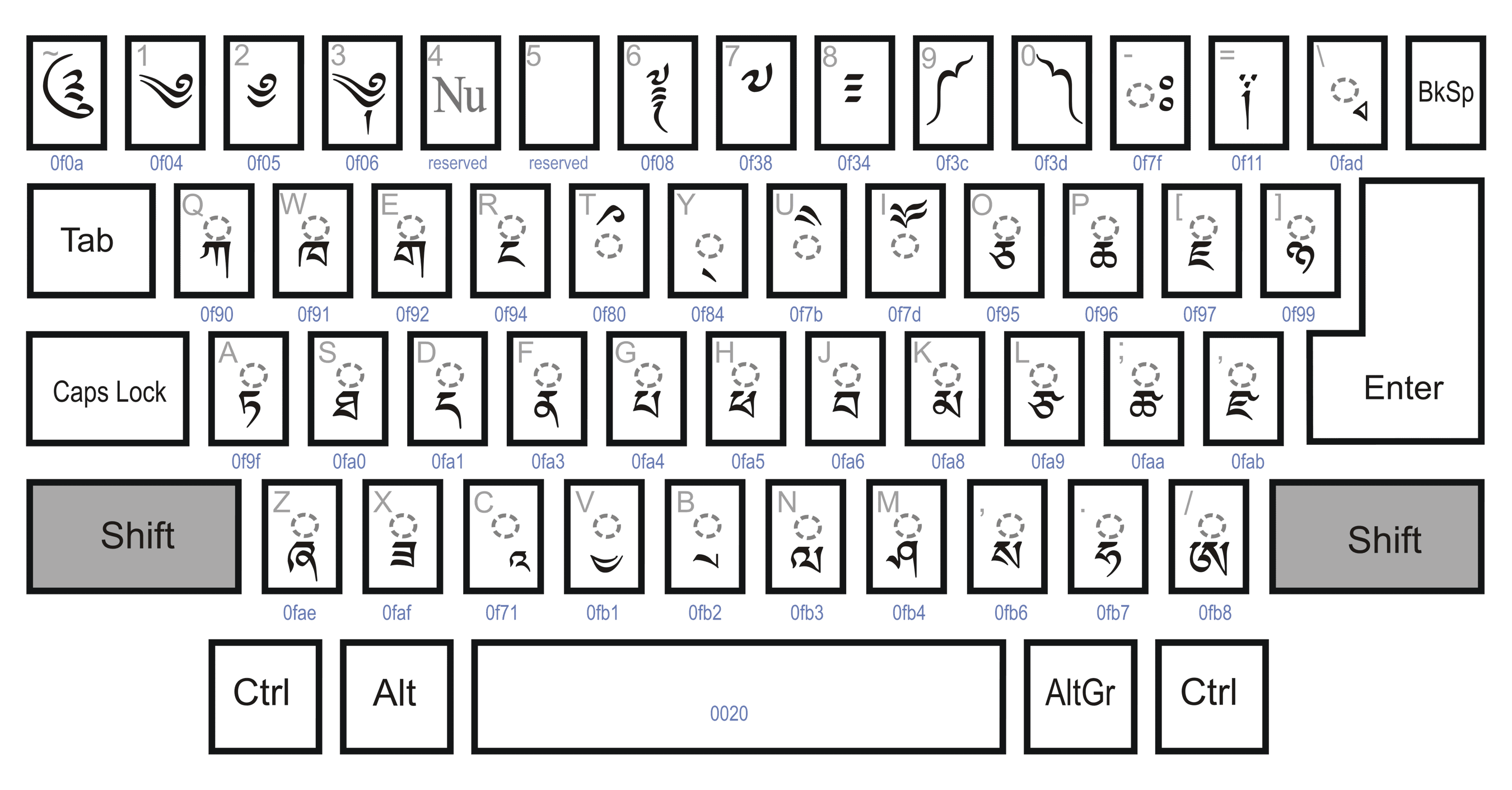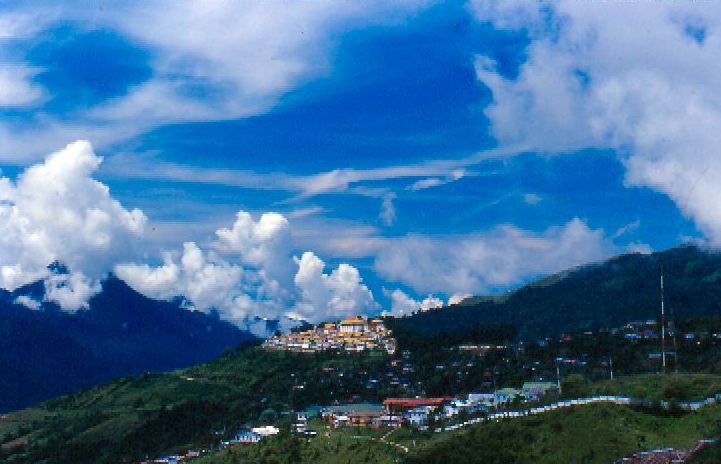|
Bumthang Language
The Bumthang language ( dz, བུམ་ཐང་ཁ་, ); also called "Bhumtam", "Bumtang(kha)", "Bumtanp", "Bumthapkha", and "Kebumtamp") is an East Bodish language spoken by about 20,000 people in Bumthang and surrounding districts of Bhutan. Van Driem (1993) describes Bumthang as the dominant language of central Bhutan. Related languages Historically, Bumthang and its speakers have had close contact with speakers of the Kurtöp, Nupbi and Kheng languages, nearby East Bodish languages of central and eastern Bhutan, to the extent that they may be considered part of a wider collection of "Bumthang languages." Bumthang language is largely lexically similar with Kheng (92%), Nyen (75%–77%), and Kurtöp (70%–73%); but less so with Dzongkha (47%–52%) and Tshangla (40%–50%, also called "Sharchop"). It is either closely related to or identical with the Tawang language of the Monpa people of Tawang in India and China. Grammar Bumthang is an ergative–absolutive language. ... [...More Info...] [...Related Items...] OR: [Wikipedia] [Google] [Baidu] |
Bhutan
Bhutan (; dz, འབྲུག་ཡུལ་, Druk Yul ), officially the Kingdom of Bhutan,), is a landlocked country in South Asia. It is situated in the Eastern Himalayas, between China in the north and India in the south. A mountainous country, Bhutan is known as "Druk Yul," or "Land of the Thunder Dragon". Nepal and Bangladesh are located near Bhutan but do not share a land border. The country has a population of over 727,145 and territory of and ranks 133rd in terms of land area and 160th in population. Bhutan is a Constitutional Democratic Monarchy with King as head of state and Prime Minister as head of government. Mahayana and Vajrayana Buddhism is the state religion and the Je Khenpo is the head of state religion. The subalpine Himalayan mountains in the north rise from the country's lush subtropical plains in the south. In the Bhutanese Himalayas, there are peaks higher than above sea level. Gangkhar Puensum is Bhutan's highest peak and is the highest uncl ... [...More Info...] [...Related Items...] OR: [Wikipedia] [Google] [Baidu] |
Routledge
Routledge () is a British multinational publisher. It was founded in 1836 by George Routledge, and specialises in providing academic books, journals and online resources in the fields of the humanities, behavioural science, education, law, and social science. The company publishes approximately 1,800 journals and 5,000 new books each year and their backlist encompasses over 70,000 titles. Routledge is claimed to be the largest global academic publisher within humanities and social sciences. In 1998, Routledge became a subdivision and imprint of its former rival, Taylor & Francis Group (T&F), as a result of a £90-million acquisition deal from Cinven, a venture capital group which had purchased it two years previously for £25 million. Following the merger of Informa and T&F in 2004, Routledge became a publishing unit and major imprint within the Informa "academic publishing" division. Routledge is headquartered in the main T&F office in Milton Park, Abingdon, Oxfordshire and ... [...More Info...] [...Related Items...] OR: [Wikipedia] [Google] [Baidu] |
Bumthang Province
Bumthang Province (Dzongkha: བུམ་ཐང་; Wylie: ''bum-thang'') was one of the nine historical Provinces of Bhutan. Bumthang Province occupied lands in north-central Bhutan. It was administered from the Jakar Dzong in the town of Jakar. The ruling governor was known as the Dzongpen of Bumthang, however by the 19th century, actual power was effectively in the hands of the Penlop of Trongsa, who controlled eastern Bhutan. History Under Bhutan's early theocratic dual system of government, decreasingly effective central government control resulted in the ''de facto'' disintegration of the office of Shabdrung after the death of Shabdrung Ngawang Namgyal in 1651. Under this system, the Shabdrung reigned over the temporal Druk Desi and religious Je Khenpo. Two successor Shabdrungs – the son (1651) and stepbrother (1680) of Ngawang Namgyal – were effectively controlled by the Druk Desi and Je Khenpo until power was further splintered through the innovation of multiple Sha ... [...More Info...] [...Related Items...] OR: [Wikipedia] [Google] [Baidu] |
Languages Of Bhutan
There are two dozen languages of Bhutan, all members of the Tibeto-Burman language family except for Nepali, which is an Indo-Aryan language, and Bhutanese Sign Language. Dzongkha, the national language, is the only native language of Bhutan with a literary tradition, though Lepcha and Nepali are literary languages in other countries. Other non-Bhutanese minority languages are also spoken along Bhutan's borders and among the primarily Nepali-speaking Lhotshampa community in South and East Bhutan. Chöke (or Classical Tibetan) is the language of the traditional literature and learning of the Buddhist monastics. Sino-Tibetan languages Geographically, since Bhutan is predominantly located on the Tibetan plateau, almost all spoken languages of the country belong to the family of Sino-Tibetan languages, or more specifically, the Bodish sprachbund. Dzongkha and other Tibetic languages The Central Bodish languages are a group of related Tibetic languages descended from Old Tibeta ... [...More Info...] [...Related Items...] OR: [Wikipedia] [Google] [Baidu] |
China
China, officially the People's Republic of China (PRC), is a country in East Asia. It is the world's most populous country, with a population exceeding 1.4 billion, slightly ahead of India. China spans the equivalent of five time zones and borders fourteen countries by land, the most of any country in the world, tied with Russia. Covering an area of approximately , it is the world's third largest country by total land area. The country consists of 22 provinces, five autonomous regions, four municipalities, and two Special Administrative Regions (Hong Kong and Macau). The national capital is Beijing, and the most populous city and financial center is Shanghai. Modern Chinese trace their origins to a cradle of civilization in the fertile basin of the Yellow River in the North China Plain. The semi-legendary Xia dynasty in the 21st century BCE and the well-attested Shang and Zhou dynasties developed a bureaucratic political system to serve hereditary monarchies, or dyna ... [...More Info...] [...Related Items...] OR: [Wikipedia] [Google] [Baidu] |
India
India, officially the Republic of India (Hindi: ), is a country in South Asia. It is the seventh-largest country by area, the second-most populous country, and the most populous democracy in the world. Bounded by the Indian Ocean on the south, the Arabian Sea on the southwest, and the Bay of Bengal on the southeast, it shares land borders with Pakistan to the west; China, Nepal, and Bhutan to the north; and Bangladesh and Myanmar to the east. In the Indian Ocean, India is in the vicinity of Sri Lanka and the Maldives; its Andaman and Nicobar Islands share a maritime border with Thailand, Myanmar, and Indonesia. Modern humans arrived on the Indian subcontinent from Africa no later than 55,000 years ago., "Y-Chromosome and Mt-DNA data support the colonization of South Asia by modern humans originating in Africa. ... Coalescence dates for most non-European populations average to between 73–55 ka.", "Modern human beings—''Homo sapiens''—originated in Africa. Then, int ... [...More Info...] [...Related Items...] OR: [Wikipedia] [Google] [Baidu] |
Tawang District
Tawang district (Pron:/tɑ:ˈwæŋ or təˈwæŋ/) is the smallest of the 26 administrative districts of Arunachal Pradesh state in northeastern India. With a population of 49,977, it is the eighth least populous district in the country (out of 707). History Tawang is inhabited by the Monpa people. From 500 BC to 600 AD a kingdom known as Lhomon or Monyul ruled the area. The Monyul kingdom was later absorbed into the control of neighbouring Bhutan and Tibet. Tawang Monastery was founded by the Merak Lama Lodre Gyatso in 1681 in accordance with the wishes of the 5th Dalai Lama, Ngawang Lobsang Gyatso, and has an interesting legend surrounding its name, which means "Chosen by Horse". The sixth Dalai Lama, Tsangyang Gyatso, was born in Tawang. Tawang was historically part of Tibet. The 1914 Simla Accord defined the McMahon Line as the new boundary between British India and Tibet. By this treaty, Tibet relinquished several hundred square miles of its territory, including Ta ... [...More Info...] [...Related Items...] OR: [Wikipedia] [Google] [Baidu] |
Monpa People
The Monpa or Mönpa () is a major tribe of Arunachal Pradesh in northeastern India. The Tawang Monpas have a migration history from Changrelung. The Monpa are believed to be the only nomadic tribe in Northeast India – they are totally dependent on animals like sheep, cow, yak, goats and horses. The Monpa have a very close affinity with the Sharchops of Bhutan. Their languages are Tibeto-Burman languages written with the Tibetan alphabet. Name Tibetan Buddhists texts present "Monyul" (literally, "low land") as the territory immediately to the south of Tibet below the Himalayan crest line. Its borders were imprecise, but roughly stretched from eastern Nepal to the Tawang area. "Monpa" were the people of Mon and they were distinguished from "Lopa" (also spelt "Lhopa"), who were the wild and intractable tribes of the Assam Himalayan region. In practice, Monpa were people amenable to the proselytising efforts of the Buddhist monks, whereas Lopa wer those inimical to them. In co ... [...More Info...] [...Related Items...] OR: [Wikipedia] [Google] [Baidu] |
Tawang Language
The Takpa or Dakpa language (), ''Dakpakha'', known in India as Tawang Monpa, also known as Brami in Bhutan, is an East Bodish language spoken in the Tawang district of Arunachal Pradesh, and in northern Trashigang District in eastern Bhutan, mainly in Kyaleng (Shongphu gewog), Phongmed Gewog, Dangpholeng and Lengkhar near Radi Gewog. Van Driem (2001) describes Takpa as the most divergent of Bhutan's East Bodish languages, though it shares many similarities with Bumthang. SIL reports that Takpa may be a dialect of the Brokpa language and that it been influenced by the Dzala language whereas Brokpa has not. Takpa is mutually unintelligible with Monpa of Zemithang and Monpa of Mago-Thingbu. Monpa of Zemithang is another East Bodish language, and is documented in Abraham, et al. (2018).Abraham, Binny, Kara Sako, Elina Kinny, Isapdaile Zeliang. 2018. Sociolinguistic Research among Selected Groups in Western Arunachal Pradesh: Highlighting Monpa'. SIL Electronic Survey Reports 2 ... [...More Info...] [...Related Items...] OR: [Wikipedia] [Google] [Baidu] |
Tshangla Language
Tshangla is a Sino-Tibetan language of the Bodish branch closely related to the Tibetic languages. Tshangla is primarily spoken in Eastern Bhutan and acts as a lingua franca in the region; it is also spoken in the adjoining Tawang tract in the Indian state of Arunachal Pradesh and the Pemako region of Tibet. Tshangla is the principal pre-Tibetan language of Bhutan. Classification Tshangla is frequently assumed to be close to the Tibetic languages. Bradley (2002) includes in among the East Bodish languages. Van Driem (2011), however, leaves it unclassified within Sino-Tibetan, pending further research. Bodt (2012:188-189) classifies Tshangla as a Bodish language, but notes that Tshangla (like East Bodish) is related to, but not directly descended, from Classical Tibetan. Varieties Tshangla is a dialect cluster consisting of a few mutually unintelligible language varieties, including (Gerber 2018):Gerber, Pascal. 2018. Areal features in Gongduk, Bjokapakha and Black Mountain M ... [...More Info...] [...Related Items...] OR: [Wikipedia] [Google] [Baidu] |
Dzongkha
Dzongkha (; ) is a Sino-Tibetan language that is the official and national language of Bhutan. It is written using the Tibetan script. The word means "the language of the fortress", from ' "fortress" and ' "language". , Dzongkha had 171,080 native speakers and about 640,000 total speakers. Dzongkha is considered a South Tibetic language. It is closely related to and partially intelligible with Sikkimese, and to some other Bhutanese languages such as Chocha Ngacha, Brokpa, Brokkat and Lakha. It has a more distant relationship to Standard Tibetan. Spoken Dzongkha and Tibetan are around 50 to 80 percent mutually intelligible. Usage Dzongkha and its dialects are the native tongue of eight western districts of Bhutan (''viz.'' Wangdue Phodrang, , Thimphu, Gasa, Paro, Ha, Dagana and Chukha). There are also some native speakers near the Indian town of Kalimpong, once part of Bhutan but now in North Bengal and in Sikkim. Dzongkha was declared the national language of Bhutan ... [...More Info...] [...Related Items...] OR: [Wikipedia] [Google] [Baidu] |




.png)